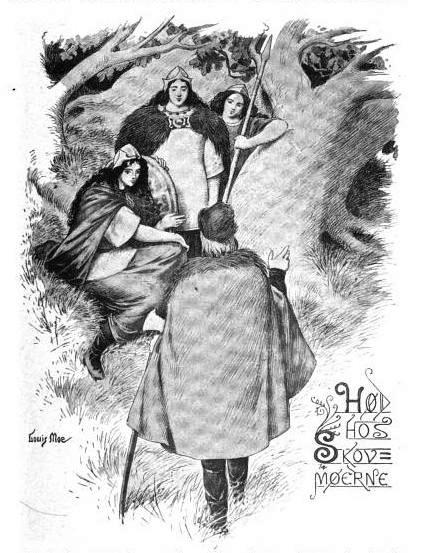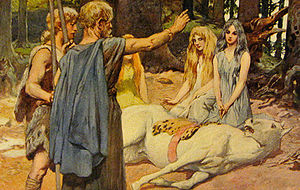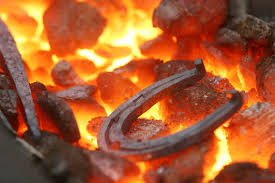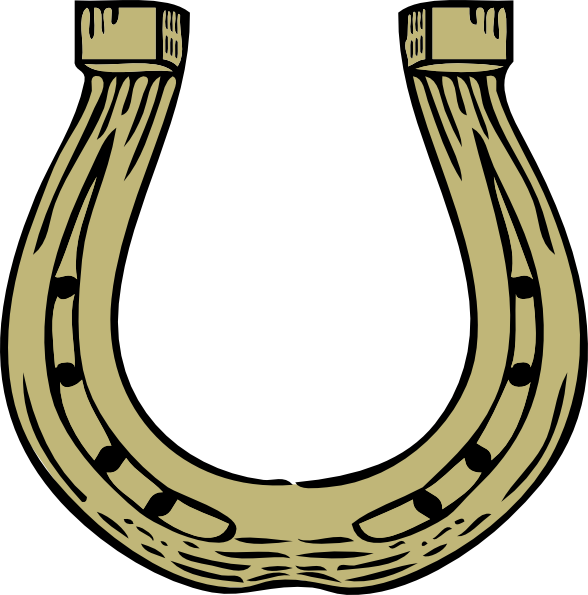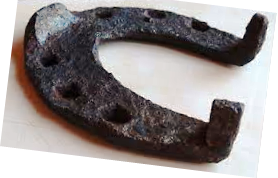
Baldur, Foot-Lamed
An Investigation
by Carla O'Harris
© 2007
[HOME]
|
This will be an investigation to draw out
the potential implications of a curious motif in Chapter 101 of
Njal's Saga, and how it may relate to Havamal 126's warning
against Hodur [Loddfafnir] taking up the art of shoe-smithing. |
||||||||||
| I. Hodur the Shoe-Smith | ||||||||||
Havamal 126 |
||||||||||
| II. Baldur's Foot-Problems | ||||||||||
|
However, on page 46 of the same text, Rydberg says, "Saxo says that Baldur, before his death, became weak-footed and was carried on a stretcher, instead of using his wonderful horse, also known in the Danish tradition..." That source, from Book Three of Saxo Grammaticus' History of the Danes, as translated by Peter Fisher in Hilda Ellis Davidson's edition, reads, "Balder was incessantly tormented at night by phantoms which ... caused him to fall into such an unhealthy condition that he could not even walk properly. For this reason he took to travelling in a chariot or carriage." That same passage, as translated by Oliver Elton , reads, "Balder was continually harassed by night phantoms feigning the likeness of Nanna, and fell into such ill health that he could not so much as walk, and began the habit of going his journeys in a two horse car or a four-wheeled carriage." That he was tormented at night by phantoms indicates that he was subjected to some form of sorcery. We know there was a sorceress involved. Rydberg, op. cit, p. 64 : "During a hunt, he [Hedin / Hodur] meets a sorceress who solicits him, but is rejected. For revenge, she inspires the evil thought in him to possess his brother's wife. That such a meeting was also spoken of in the myth about Baldur and Hodur is corroborated by what Saxo says of Hotherus, of what Havamal relates in circumstances that shall be presented below, by what Sorla Thattr says about Hedin's meeting with Gandul, and by the myth about Hodur's Indo-European prototype, Keresaspa..."
Of this latter, Rydberg says, op cit., p. 18, "But Keresaspa, the hero so mighty in open battle, nevertheless was unable to defend himself against the demon-world's trickery. The prince of evil in the darkness of the deep created a sorceress, a pairika, Khnathaiti, beautiful in appearance, but the quintessence of everything demonic and hostile to the world. In Vendidad, we learn that she "attached herself to Keresaspa." The Parsi tradition explains the expression as Keresaspa falling in love with her beauty. He came under her influence. Consequently, the old Indo-Iranian myth spoke of an event in Keresaspa's life when he was "... degraded to a pawn in the service of darkness." So the Sorceress who Hodur came under the influence of was throwing nightmares and night-sicknesses at Balder that made it so he could not walk. The Second Merseburg Charm, as it reads in Rydberg's text, op. cit., p. 45, says, in part :
Rydberg comments, op. cit., p. 46, "...the event can be ranked among the signs which foreboded Baldur's death, according to the Norse mythic sources." Rydberg cites a parallel charm derived from the Merseburg, but later, and partially Christianized, which reads, in part (Rydberg, op. cit. p. 50): "... His foal's foot became sprained..." So we have a myth of Baldur's horse's foot becoming sprained. Rydberg says (op cit. p. 47), "...Sinhtgunt rode closest to Baldur when the misfortune to his horse occurred, and that for this reason she is named first among those who seek to heal the injury; thereafter comes her sister, then the pair of sisters, Frigg and Fulla, and finally Odin, who as "galder's father" and possessor of the most powerful incantations, succeeds in abolishing one of Jotunheim's ills conjured by witchcraft, against which the goddesses' galder-songs proved powerless."
From Rydberg's standpoint, the Merseburg charm points to powerful sorcery coming out of Jotunheim being aimed at Baldur, and injuring his horse's foot. In comparing Baldur to the saint Stephanus, Rydberg (op cit., p.56) says, "The Ballad of Steffan relates how Stephanus waters the horse he rides and four others by a "spring", while the stars still twinkle. This watering-ceremony is the ballad's actual subject. Baldur is the defender of springs and wells. Springs rise up under his horse's hooves and wells are called by his name." Saxo, Book Three (Peter Fisher, tr.) tells us that "The victorious Balder, wishing to provide water as due refreshment for his thirsty soldiers, bored deep into the earth and discovered underground springs. From every direction the parched troops made for the gushing rills with parted lips. The site is confirmed by a permanent name..." It is directly thereafter that it is mentioned that Baldur is so tormented by phantoms that he was unable to walk. The Ballad of St. Steffan (Rydberg, op cit., p. 54) also says, "Steffan rides to the well -- ... He scoops out water with the ladle..." -- just as Baldur bored into the earth to bring up water for his troops in Saxo. Rydberg in Investigations into Germanic Mythology, Volume I, Chapter 92, says, "In the Danish popular traditions Baldur's horse had the ability to produce fountains by tramping on the ground, and Baldur's fountain in Seeland is said to have originated in this manner (cp. P. E. Muller on Saxo, Hist., 120)." He also says, same chapter, "I now return to the Merseburg formula: "Falr and Odin went to the wood, Then the foot was sprained of Balder's foal". With what here is said about Baldur's steed, we must compare what Saxo relates about Baldur himself: Adeo in adversam corporis valetudinem incidit, ut ni pedibus quidem, incedere posset (Book III). The misfortune which happened first to Baldur and then to Baldur's horse must be counted among the warnings which foreboded the death of the son of Odin." So we have something happening to Balder's foot, and to the foot of Balder's horse. Both people and horses wear shoes. We are back at shoes. Before we leave this sub-topic, let us note some converging motifs : Baldur, on a horse, exposes subterranean, deep-earth springs which rise up from the chasms beneath the soil. Then, assailed by sorcery, his horse stumbles and sprains his foot, so deeply that only Odin can heal it, and subsequently, Balder himself is unable to walk. Rydberg, in Volume II of his opus, has more to tell us. While drawing out the Baldur-motifs beneath the Olaf Geirstadaalf-palimpsest, he translates a verse from Flateyjarbok : (and here let us understand that Baldur stands in for where it says "Olaf") : "Olaf ruled Upsi in times past, widely famous ... until a foot-disease by Fold's shore caused the death of the battle-dealer." (Rydberg, Volume II, p. 67.) Rydberg comments, "What this verse says is that Olaf ... was the "gods' equal" and a brave warrior, that "foot-ache became the death of him" ... the "gods' equal" in question met his death via a foot-injury. Among the gods, only one exists about whom the story is told that some time before his death he was attacked by a disease. This god is Baldur. We may remind ourselves what Saxo says of him: that he fell so ill that ne pedibus quidem incedere posset... "he could not so much as walk"..." (Ibid, p. 68.) We have here a mythological reference to Baldur being attacked by a foot-disease by the shores, again, an association with water. |
||||||||||
| III. The Motif in Njal's Saga | ||||||||||
|
Chapter 101 of Njal's Saga has an incident which may relate to everything we have discussed above. The relevant portion of the chapter reads, "There was a man called Hedin the Sorcerer, who lived at Kerlingardal. The heathens there paid him to put Thangbrand and his companions to death, and he went up to Arnarstakk heath and performed a great sacrifice there. Then, when Thangbrand was riding from the east, the earth split open under his horse; he leaped off the horse and managed to climb up to the rim of the chasm, but the earth swallowed up his horse with all its gear, and they never saw it again. Then Thangbrand gave praise to God." —(from Vidar Hreinsson, ed., The Complete Sagas of Icelanders, Volume III, Leifur Eiriksson Publishing, Reykjavik, Iceland, 1997, p. 123.) Apparently Thangbrand praises God for the fact that he himself was not swallowed up. In the next chapter, Chapter 102, Thangbrand the Missionary kills a poet named Veturlidi, and there is a poem composed about it. Rydberg treats of this poem in his second volume, and points out that the poem refers to Baldur and Hodur. It is curious that we have an association of Baldur and Hodur here. Chapter 102 poem reads, "The tester of the sword, the shield's Baldur (that is to say one of the two missionaries Thangbrand and Gudleif) in the land held the victory tools (ie., the cross, the baptismal font, and other religious objects) in the prayer-bed's workplace (ie. the place where the prayer and sacred duty are held). Thereafter the quick tester of belief (the second of the two missionaries), Hodur of the din of battle, broke the death-hammer on the hat-stand (ie. the head) of the skald Veturlidi." (Rydberg, Volume II, pp. 87 - 88.)
Rydberg comments, "The idea receives its poetic clothing in the usual manner: by referring to well-known mythological persons and circumstances. The one missionary, he who used the religious "victory-tools" is likened to Baldur; the other missionary, who utilizes the violent weapon and kills the heathen skald is likened to Hodur (hauðr), who in the myth was portrayed as passionate and quick to act ... The workplace of the missionary likened to Baldur is "the prayer bed's workplace". The one belonging to missionary likened to Hodur is a smithy in which he is depicted standing, hammer in hand, and letting it come down on the anvil, which is Veturlidi's head ... Like the peaceful Baldur holds tools in the bed's workplace (where women in labor work), so the warlike Baldur (the missionary, Thangbrand, spoken of in Heimskringla as "very violent and murderous man") holds victory-tools in the prayer bed's workplace (i.e. the place where Christian worship is conducted). And like Hodur lets the hammer break on the anvil (so that it sinks down into the earth), so Hodur of the quick tester of faith (the second missionary, also a man of violence) lets the death-hammer break on the skald Veturlidi's hat-stand (his head, so that he sinks in death)." (Ibid, p. 88) In other words, in the poem, Thangbrand is being compared to Baldur (and Gudleif to Hodur). This is significant, because we can see that in the passage in the previous chapter, Chapter 101, Thangbrand the Missionary suffers something quite akin to the motifs we have been discussing : 1. He is assailed by sorcery. 2. That sorcery is associated with someone named Hedin (Hodur), who goes into a heath or forest. 3. The sorcery causes his horse to fall. 4. This is connected with an opening up of the chasms of the earth. (In Chapter 104, we read, "Thangbrand told King Olaf how badly the Icelanders had treated him, and said they were such sorcerers that the earth burst open under his horse and swallowed it up.") (Hreinsson, op. cit., p. 127) We note that Thangbrand had to leap off his horse to climb up the rim of the cavern. Given the cataclysmic nature of the earth opening beneath him, could he --- or his mythological predecessor behind this saga-allusion --- have sprained or injured his own foot in so doing, so that he could not walk? It seems no coincidence that two contiguous chapters associate Thangbrand with the myth of Baldur and Hodur. I suggest that the passage from Chapter 101 of Njal's Saga is in fact a direct mythological reference or allusion to the Baldur-Hodur myth, and the relevant information that it yields to us is that Hodur was behind the sorcery that led Balder's horse to fall, become sprained, and for Balder himself to be unable to walk due to a foot-injury. That is important information. |
||||||||||
| IV. Putting the Pieces Together | ||||||||||
How was Hodur connected to this? |
||||||||||
|
|
||||||||||
|
— Carla O'Harris |
||||||||||
|
When Did the
Events in the Merseburg Charm Occur in the Mythic Cycle? |
||||||||||
